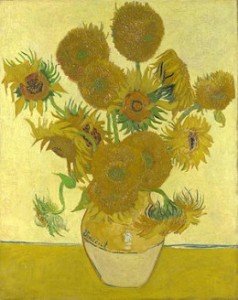What Are The Rules on Copyrighting Your Artwork?
- admin
- July 10, 2015
I wrote this article a few years ago and thought it might be interesting to visitors of this site.
Art Copyright – What To Do
Many artists wonder what they need to do in order to keep the copyright of their artwork so in this article I will attempt to explain exactly that.
Firstly I will say that I am not a lawyer but an artist but I wanted to share some information that I have learnt about copyright and art so feel free to add more info or comments if there is something I have missed.
If you work as a photographer, artist, sculptor etc then one key thing that you will want to do once you have created your work of art is to ensure that nobody copies it. There is nothing more annoying than having taken a long time and a lot of effort to create a work of art, only to see it reproduced elsewhere without your permission.
In order to keep the copyright to a painting or a photograph you actually don’t have to do too much at all as there are laws in place to protect your work. In fact it is really easy.
In fact in theory you don’t actually have to do anything to retain the copyright as the right to reproduction of the artwork belongs by law to the creator of that work (barring exceptions listed below). So, for example, if you do want to make prints of an original work that you have created then you are free to do so.
Art Copyright – Adding the Copyright Symbol
However, it can be a good idea to make sure that people know that the rights to your painting, photograph etc belong with you the artist. So in order to make it obvious that you have the art copyright on your work you would be advised to add the copyright symbol, plus your name and the year of creation, to the artwork itself.
 An easy way to do this is a method that a lot of artists use. Personally, I have a certificate of authenticity that I put on the back of my paintings that says that I hold the reproduction rights and has the copyright symbol plus other information like the catalogue number and date of completion. I print this off, sign it and stick it to the back of the canvas with a spray on adhesive (other glues can show through the canvas to the painting). You can get proforma certificates of authenticity on the internet.
An easy way to do this is a method that a lot of artists use. Personally, I have a certificate of authenticity that I put on the back of my paintings that says that I hold the reproduction rights and has the copyright symbol plus other information like the catalogue number and date of completion. I print this off, sign it and stick it to the back of the canvas with a spray on adhesive (other glues can show through the canvas to the painting). You can get proforma certificates of authenticity on the internet.
If you add the copyright symbol to a painting then you do not actually need to register the copyright anywhere in order for this to be effective. Once a work of art is completed and it is a unique piece created by you then you automatically own the copyright.
When Does Art Copyright Expire?

Well there are different rules around the world’s legal systems but in general it might be fair to say that a copyright will expire 70 years after the death of the creator. In some countries this may only be 50 years and there is also a 25 year rule for particular cases. Check out the rules for your particular country if you need to know more.
Some Art Copyright Exceptions
There are, as with everything else, exceptions to the rule. In particular, for a work of art, if you are commissioned to create a painting, sculpture or whatever and the person who gives you the commission gives you detailed instructions about what they want you to create then they may subsequently own the copyright to that work of art.
What you need to do if this may be the case, is to draw up an agreement beforehand that specifies that you will retain the art copyright and all reproduction rights to that work. Unless you do this you may be in trouble if you subsequently want to produce prints or reproductions of the work.
This can be the case particularly when someone specifically pays you to create the work. Or perhaps they are paying you as part of your job. In this case you need to ascertain with them who will own the copyright to the work once it is finished.
